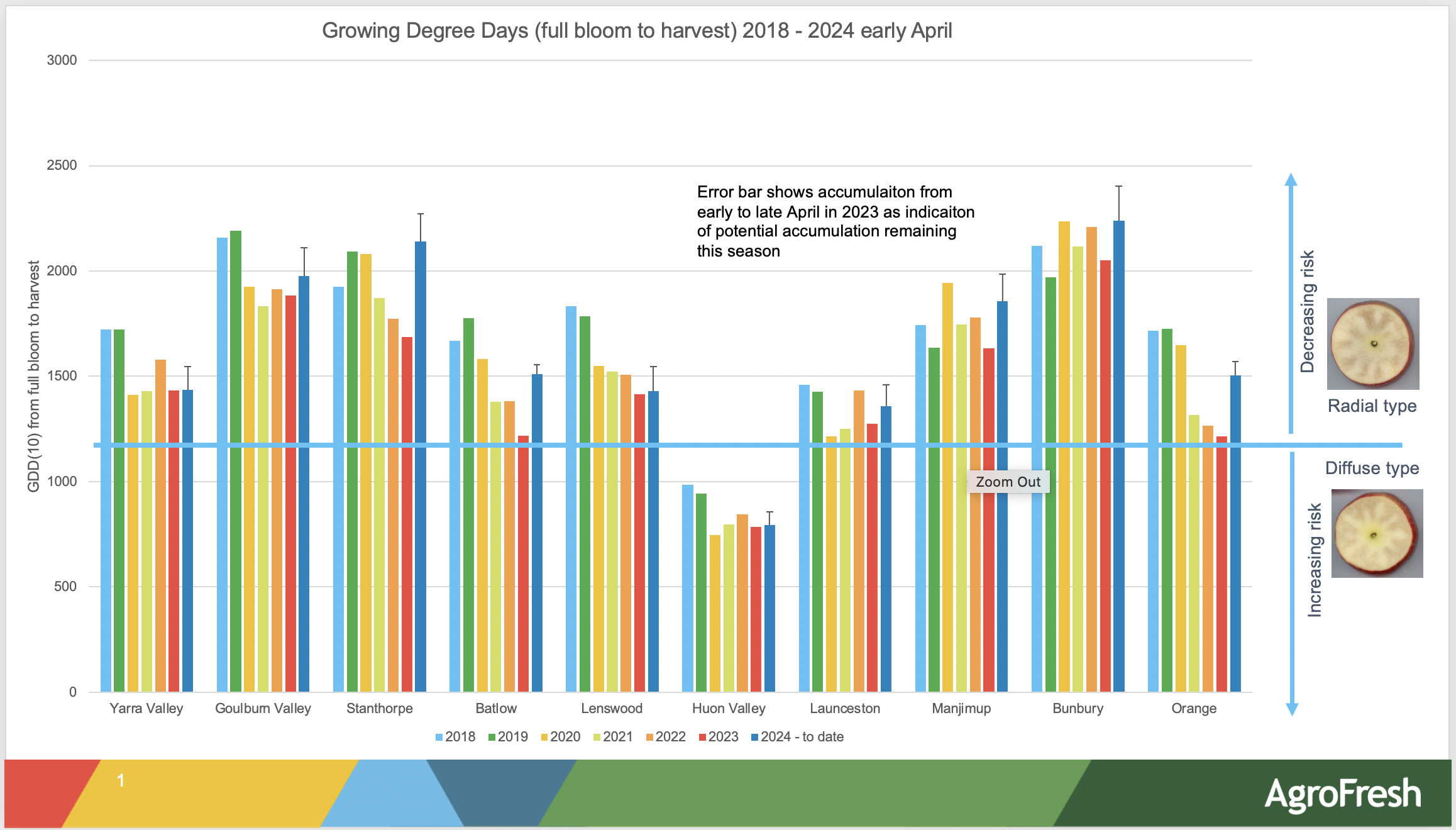Internal browning in Pink Lady apples is a complex disorder that is influenced by both pre and postharvest factors.
The term “internal browning” refers to a group of separate disorders that have different (though sometimes overlapping) causes and management strategies. The two main disorders are “radial” and “diffuse” flesh browning.
Both the radial and diffuse types of the disorder can be seasonal in nature, with wide variability in the incidence and severity between both growing locations and seasons.
The main seasonal risk predictor is the accumulation of growing degree days (GDD) between full bloom and harvest.
The radial type develops in growing regions that accumulate more than 1100 GDD, with the risk decreasing the higher the accumulation of GDD above 1100.
The diffuse type develops in growing regions that accumulate less than 1100 GDD, with the risk increasing the lower the accumulation of GDD below 1100.

Source: AgroFresh Australia, 2024
In 2024, the accumulation of GDD is looking favourable for most regions having a relatively reduced risk of the fruit being susceptible to developing internal browning. This is particularly the case when compared to recent years where the risk was higher, as seen in the seasonal accumulation in GDD.
There are still a few weeks of GDD accumulation to go before the 2024 Pink Lady harvest so the seasonal risk is still to be determined and may change from current projections.
While the seasonal climate can establish the risk of the development of the disorder, postharvest factors can manage the development of the disorder to either the minimum or the maximum potential.
There is no “silver bullet” for the management of internal browning in Pink Lady apples. All pre and postharvest factors need to be managed to the best of your ability in order to reduce the risk as much as possible.
Maturity and storage guidelines for optimal management of Pink Lady apples to reduce the development of internal browning:
©2024 AgroFresh Solutions, Inc. All rights reserved. Use plant protection products safely. Always read the label and product information before use.
